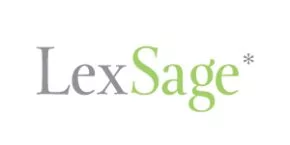On September 21, 2017, the Canada-European Union Comprehensive Economic and Trade Agreement (the "Canada-EU CETA") entered into effect provisionally. Importantly, the customs duty reductions and eliminations took effect today. The rules of origin took effect today. The customs procedures took effect today. The quota requirements took effect today. Most of the Canada-EU CETA is in effect today.
There is a lot that Canadian businesses need to know and need to
learn. Canadian businesses are used to NAFTA rules. The
Canada-EU CETA did not adopt all the same rules as NAFTA. If
you do what is required for NAFTA, you may run into problems with
Canada-EU CETA.
Below, we briefly discuss 7 areas where there are differences
between the steps importers of EU-origin goods must take in order
to benefit from the Canada-EU CETA:
1. DO NOT use a NAFTA certificate of origin for CETA purposes. Canada and the European Union did not adopt a certificate of origin like NAFTA. Instead, each and every invoices for originating goods must include a signed Origin Declaration or Certification of Origin on the invoice or another commercial document. The English Format (and other languages) for the Certification of Origin / Origin Declaration is contained in Annex 2 of the Protocol on the rules of origin and customs procedures. The Certification of Origin may be provided on a separate commercial document, however, according to the Canada Border Services Agency, the separate document must identify the invoice on the originating goods. What this means for Canadian importers is more paper – rather than less paper. We have heard that some computer systems for generating invoices are not able to incorporate a computerized signed statement. There will be situations where the paperwork is doubled. One certificate of origin similar to the NAFTA certificate of origin will not suffice as it will not link to particular invoices as required by the CBSA.
2. DO NOT used a NAFTA rules of origin – use the Canada-EU CETA rules of origin. Canada and the European Union negotiated rules of origin. Some are the same as NAFTA and some are different. As a result, you have to look up the applicable rule of origin in the Canada-EU CETA. The product-specific rules of origin are found in Annex 5 of the Protocol on rules of origin and customs procedures.
3. Use tariff abbreviation CEUT and tariff code 31 on your B3 Canada Customs Coding form for goods originating in the European Union and included territories. For more information, see Are You Ready To Benefit From The Canada-EU CETA?
4. The Origin Verification Process is different in the Canada-EU CETA. The Canada-EU CETA Protocol on rules of origin and origin procedures establishes an origin verification process whereby the European Union verifies EU company certifications of origin / Origin Declarations made by EU exporters and producers and the CBSA verifies Canadian suppliers' certifications of origin / Origin Declarations made by Canadian exporters and producers. The CBSA will not travel to the EU to verify EU certifications of origin / Origin Declarations. For more information, see The Origin Verification Process in the Canada-EU CETA is Different From NAFTA and Other Free Trade Agreements.
5. If you are importing textiles or apparel, make sure you have any required import specific import permit prior to importation. You may not be able to claim CETA preferential tariff treatment if you do not have an import permit and you may not obtain quota if others have already accounted for the allotted amount. See Notice to Importers SER No. 899 "Textiles and Apparel for Import to Canada from the European Union and its Member States (Items 86.98 and 86.99 on Canada's Import Control List)".
6. If you wish to import cheese on a duty-free basis, you must participate in the cheese quota application process. The 2017 cheese quota allocation process is now closed. The 2018 cheese quota allocation process will start in October 2017. For more information, see "Canada Announces Canada-EU CETA Cheese Quota Process".
7. Have your proof of EU testing: Canada's rules with respect to product standards continue to apply. However, the Canada-EU CETA reduces administrative delays relating to certain goods (not all goods) by eliminating the need for double-testing. In the Protocol on the mutual acceptance of results of conformity assessment, Canada has agreed to accept assessment certificates issued by EU members with respect to 11 categories of goods (such as toys, electrical equipment, construction products, recreational craft, etc.).
The content of this article is intended to provide a general guide to the subject matter. Specialist advice should be sought about your specific circumstances.

